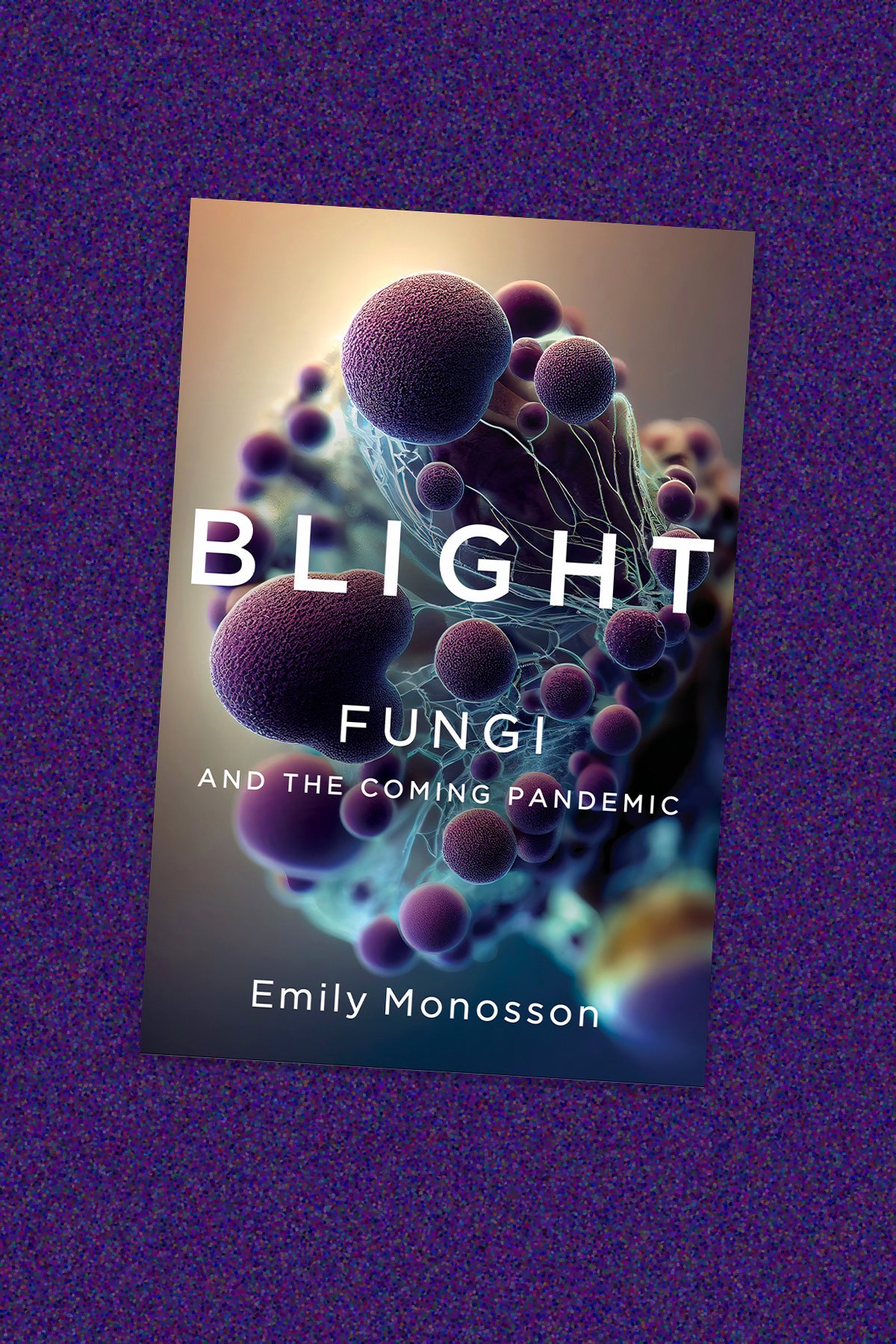
Book
A fungal pandemic won’t be “The Last of Us,” but it will be dangerous
In 2010, a fungal blight wiped out Emily Monosson’s tomato garden. A toxicologist by training, Monosson spends most of her time thinking about how invisible microbes like bacteria and viruses threaten our lives. But she’d never considered the destructive powers of fungi until she surveyed the squishy remains of her garden patch.
The plight of her tomato patch inspired the scientist and writer to explore just how dangerous fungal pathogens can be. The result is her new book, Blight: Fungi and the Coming Pandemic. We live in harmony with the vast majority of microbes including yeasts, mushrooms, and molds, but an important minority have the potential to destroy entire species of animals or plants, and pose a serious threat to human health. As Monosson writes, “fungal threats are not one-off, single-species problem oddities, as news headlines may suggest. They are big, continuing, diverse, and potentially catastrophic.”
Sign up for Harvard Public Health
Delivered to your inbox weekly.
In Blight, Monosson examines our long-running battle to contain fungal outbreaks, including our successes and failures. She spoke with Harvard Public Health contributor Amy Sutherland about the threat of a fungal pandemic, what that threat means for humans, and what we can do to stop it.
This interview was edited for length and clarity.
Sutherland: What were some of the challenges of writing this book?
Monosson: Fungus! It’s so freaking complicated. I’ve written about bacteria and viruses and they are kind of simple [in comparison]. [Because] it’s so complicated, I ended up writing less about the specifics of fungus and more about what we’re losing to fungal infections.
Sutherland: How likely is a fungal pandemic?
Monosson: Of the scientists I spoke with, most think there will be more fungal outbreaks in wildlife, plants, and trees. But a fungal pandemic in other species will affect us, especially because of how vulnerable agricultural crops can be.
Sutherland: What is the greatest threat to humans from fungi?
Monosson: One of the more important risks to humans is what a fungal pandemic could do to our food supply. One fungus, Stem rust, has infected wheat crops since people first started growing it. [There are now certain types of wheat that are resistant to Stem rust, but] fungi often become resistant to fungicides or evolve ways around the plants’ resistance. In 1998, a type of Stem rust, Ug99, emerged in East Africa and overcame wheat’s resistance to it. Scientists have worried ever since it would spread around the world. So far that hasn’t happened but there are plenty of other emergent strains of rust that could also be a threat to wheat crops around the world.
Sutherland: What is one of the species we are losing to fungi?
Monosson: Frogs! Dozens of species have been driven into extinction, hundreds of other species are infected or threatened. Most likely the cause is the animal trade, us moving frogs around from one place to another. Like other plants, animals, and microbes, frogs are part of complex ecosystems. Plus, they eat insects. One study reported a correlation between the decline of frogs and the rise of malaria.
Sutherland: Why are fungal infections on the rise?
Monosson: Likely because of increased trade in plants and animals and our own travel. All of this moving around provides opportunities for fungi to move. Also, in a changing climate, more storms provide opportunities for fungi to travel on the wind or with floods. Large monocrops also give fungi a boost.
Sutherland: Are fungal infections growing in humans?
Monosson: Some are on the rise in humans. Candida auris and Valley fever in the Southwest are two examples. Some fungi, like Candida auris, have mortality rates of 30 percent or higher. But with our body temperature, we generally run too hot for most fungi. So, fungi are more of a threat to plants and other species compared with us and other mammals. But if fungi have the opportunity to evolve to tolerate our warmer body temperatures, then they may be better prepared to infect us. That is what some scientists hypothesize happened with Candida auris. It evolved to tolerate our warm bodies.
Sutherland: What tools do we have to fight a fungal pandemic?
Monosson: We need more regulations aimed at preventing movement of fungi, like an import ban on high-risk animals or a required health certificate stating that a plant or animal has been tested. These are not foolproof steps but they are better than doing nothing at all. Those types of regulations were put in place to protect salamanders here from being infected by a fungus found in European salamanders. So far, no fungal infections have been found in North American salamander populations. That is a hopeful story. For humans, vaccines would be great. None are available yet, but some are under development.
Sutherland: Did you end up feeling more or less optimistic about the future?
Monosson: If there is greater awareness of fungi threats, and faster diagnosis of fungal infections [in plants, animals, and humans], that could help. We’ll never be able to just wave a wand, but maybe one day we’ll be able to just take a swab and identify all kinds of things that are on animals and plants. That might not be too far-fetched.
Book cover: Courtesy of W.W. Norton & Company


